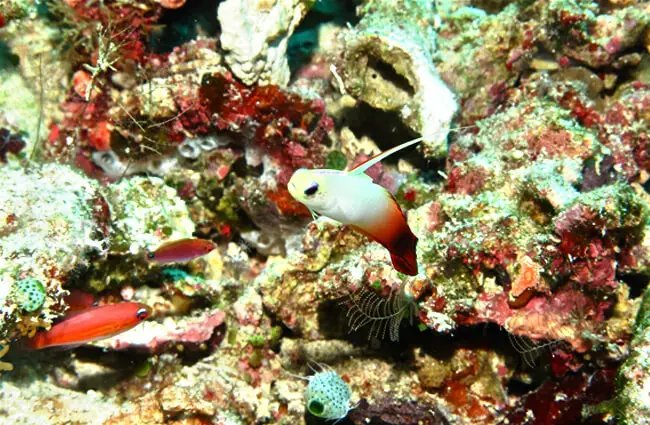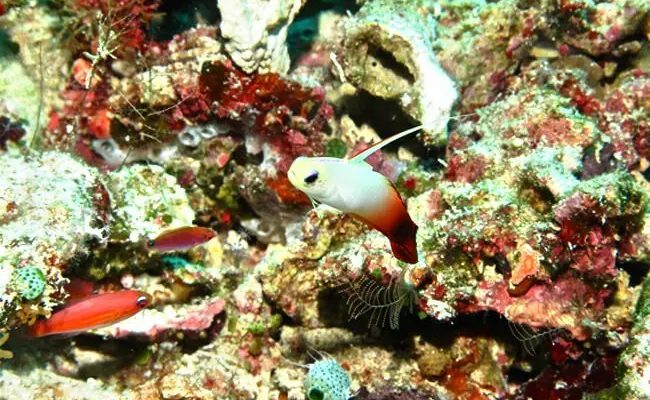
Goby fish are often seen darting in and out of hiding spots, displaying behaviors and physical traits that make them incredibly resilient. Known for their diverse habitats, gobies can be found in everything from coral reefs to freshwater streams. Let’s dive deeper into the unique adaptations that give these small fish such an impressive advantage in their underwater world.
Body Structure Adaptations
Goby fish have a body structure that’s perfectly designed for their aquatic lifestyle. They typically have a distinctively small, elongated shape, which allows them to quickly dart around rocks and coral. Think of them as the sports cars of the fish world—streamlined for speed and agility. This shape not only helps them escape predators but also enables them to navigate the intricacies of their environment with ease.
Another interesting feature of gobies is their fused pelvic fins, which form a sort of suction cup. This adaptation is like having an extra hand! It allows them to cling tightly to rocks, coral, or any surface in their habitat. By anchoring themselves in this way, they can stay safe from strong currents and predators, giving them a significant survival advantage.
Finally, their colors and patterns play a crucial role in blending into their surroundings. Most gobies have intricate hues that mimic the environment, from sandy bottoms to colorful reefs. This camouflage helps them evade predators and get the jump on unsuspecting prey.
Behavioral Adaptations
Gobies are not just physically equipped for survival; they also have some smart behavioral adaptations. One of the most remarkable behaviors is their ability to create symbiotic relationships, especially with shrimp. You might wonder, how does this work? Well, some gobies have a mutualistic partnership with certain species of shrimp, where the shrimp dig out a burrow that both creatures share. This partnership provides a safe haven for the goby, while the shrimp benefit from the goby’s watchful eyes, alerting them to potential dangers.
Speaking of danger, gobies are excellent at signaling each other. They use a mix of body language and color changes to communicate. When a goby spots a predator, it can send signals to other gobies, warning them to hide. Imagine a game of “hide and seek” played underwater—gobies have mastered it!
In addition to these social behaviors, gobies are known for their unique hunting methods. They often hunt in a quick, zippy manner, darting out to catch tiny crustaceans or plankton. This hunting style, combined with their speed, makes them formidable little predators in their own right.
Physiological Adaptations
Gobies are incredibly adaptable when it comes to their physiology, especially regarding their gills. Some species can tolerate higher levels of salinity, which means they can thrive in both freshwater and saltwater environments. It’s like being able to live in two different worlds, switching seamlessly based on their surroundings. This ability allows them to occupy a variety of niches and exploit different food sources.
Moreover, the goby’s metabolism can adapt depending on the food availability in their habitat. If food is scarce, their bodies can slow down their metabolic rate, allowing them to survive longer without eating. Imagine it like going into a mini-hibernation mode, conserving energy until conditions improve.
Additionally, gobies possess a robust immune system, enabling them to fend off diseases that other fish might succumb to easily. This resilience is crucial for survival in often challenging environments filled with various pathogens.
Reproductive Strategies
When it comes to reproduction, gobies have some clever strategies to ensure their young survive. Many goby species are known to practice parental care. After laying eggs, the males often guard the nests from predators and clean the area. This level of care increases the chances that the young gobies will hatch safely and grow.
Some gobies also practice egg deposition in less accessible spots to avoid predators. They’ll often choose rocky crevices or plant roots, creating a safer environment for their offspring. This is a thoughtful strategy that illustrates how gobies adapt to ensure the next generation.
Another fascinating aspect of their reproduction is that some goby species can change their sex based on environmental factors. This means if a male becomes dominant, certain factors can trigger a female to change into a male. It’s nature’s way of making sure there’s always a balance and maximizing breeding opportunities.
Habitat Preferences and Adaptations
Goby fish are found in a wide range of habitats, from coral reefs to rivers and lakes. Their adaptability is remarkable, allowing them to thrive in both freshwater and saltwater environments. For example, some gobies are expert burrowers, meaning they can dig into the substrate to create a safe space for themselves. This behavior protects them from predators and allows them to stay hidden while they hunt for food.
In coral reefs, gobies often find refuge in the nooks and crannies of the reef structure. This adaptation not only provides safety but also a wealth of food sources nearby. In freshwater environments, they may inhabit areas with plenty of vegetation, where they can easily hide from predators.
You might be surprised to learn that some gobies even have the ability to thrive in harsh conditions, like low oxygen levels. They can adapt their breathing patterns, allowing them to survive in environments where other fish cannot. This resilience is yet another testament to their incredible adaptability.
In conclusion, the goby is a fantastic example of how a small fish can thrive in various underwater environments through a mix of physical, behavioral, and physiological adaptations. From their unique body structures to clever reproductive strategies, gobies demonstrate that even the smallest creatures can have a big impact on their ecosystems. They remind us of the beauty of adaptation in nature—a true testament to survival against the odds.
Next time you’re near water, whether it’s a calm stream or a bustling coral reef, take a moment to appreciate the gobies and their incredible journey. Their ability to navigate and flourish in challenging conditions is a lesson to us all about resilience and adaptability in life.

